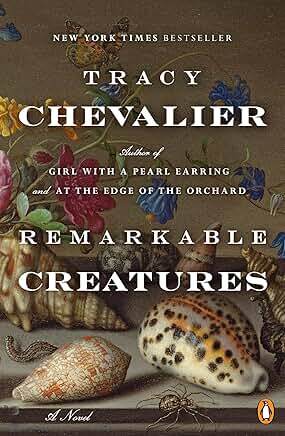Sunday Review: Remarkable Creatures by Tracy Chevalier

Remarkable Creatures is a historical novel about two remarkable women who lived in the first half of the 1800s: Mary Anning and Elizabeth Philpot. During a time when women were thought not to have the intellectual capacity to understand science, let alone contribute to its store of knowledge, these two made fossil discoveries that changed our understanding of geology and the vast amounts of time that Earth had existed.
Mary Anning is the daughter of a struggling working-class family in Lyme Regis on the southern coast of England. When her father, a carpenter, dies in debt, the family is thrown into grinding poverty. However, Mary has a surprising talent: an almost instinctive ability to find fossils buried in the cliffs of what is known as England’s Jurassic Coast. The money the family makes selling her finds helps them to survive.
Elizabeth Philpot is both twenty years older than Mary and a member of a higher social class. Her situation is like something in a Jane Austen novel; she and her two unmarried sisters move to Lyme because it is a less-expensive place for three single women of limited (but sufficient) means to live. Despite their very real differences, Mary and Elizabeth become friends and fossil-hunting partners.
The novel tackles many issues: class differences, the obstacles encountered by women scientists who wanted to be taken seriously, the way wealthy dilettantes exploited those who did the grueling work of fossil hunting and preservation, and the conflict that many people of the time period felt between their religious beliefs and the growing evidence of extinct prehistoric animals.
This was my favorite of Chevalier’s works since Girl with a Pearl Earring. The characters are expertly developed, and the alternating points of view allow us to hear both voices clearly. As always, Chevalier has a deft hand with descriptive details. Highly recommended.



